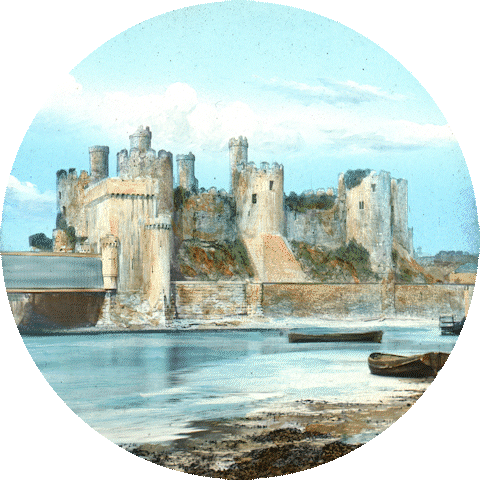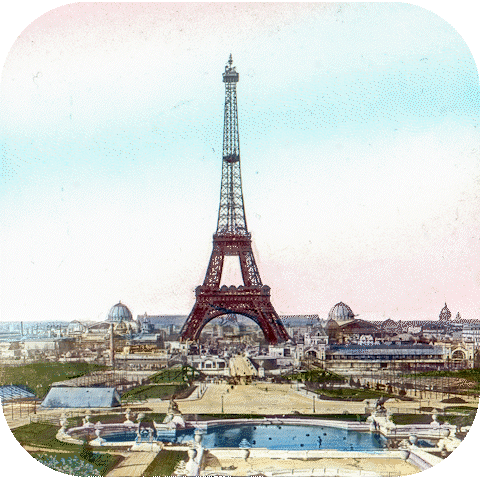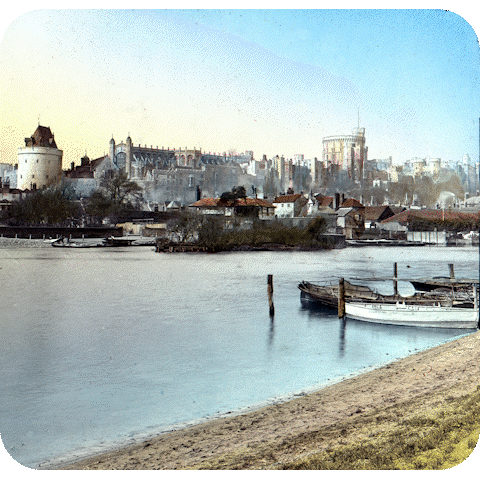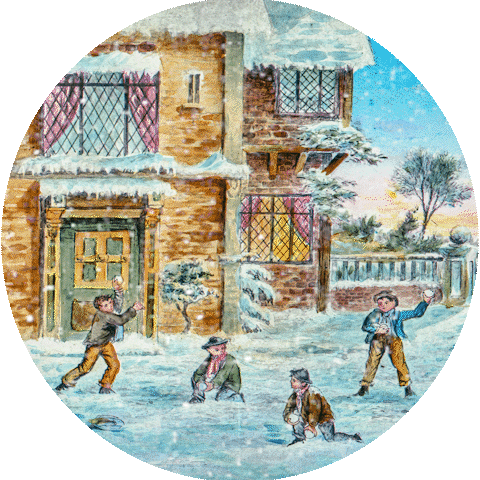As we've described earlier, one of the most straightforward effects was to fade out the daytime scene and bring up an evening or night scene. To ensure that the scenes were identical, they would be printed onto the glass slides from the same negative. The lantern slide artist would then paint the slides, one for the day and the other with some darker colours for the night. Adding a 'moon' was the usual way to enhance the effect!

We saw HMS Victory on an earlier page: the slide above is Conway castle, this time a set of three slides taking us from day to evening and then night.

A three-slide dissolving set of the Eiffel Tower in Paris. The tower was completed in 1889, which helps us date both the slide and Mr Salter's catalogue to that year or possibly the following year. We can imagine that this set of slides was produced soon after the opening of the tower to illustrate tot he world the wonder of the huge structure.

A dissolving view of Windsor Castle - and a picture to check if there is anyone at home!

This scene of winter carolling is a combination of dissolving and slipping slides. The children snowballing dissolves into the evening scene of the house, then from the second lens of the biunial we overlay a slipping slide with the carol singers; this slide has a blackout over the door which, when pulled back, has the effect of opening the door. For this example, we've added falling snow from a roller blind. When projecting the slide from a lantern, it's important to fade out the snow before the snow roller runs out!
Ideally, a triunial lantern would be used to show this set for performance, but we have no knowledge of what happened to Mr Salter's lantern of over 100 years ago.

